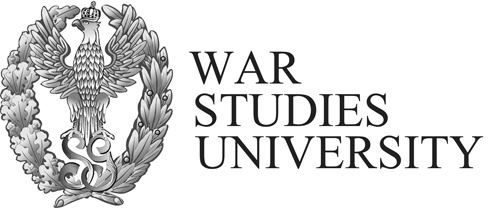Online first
Current issue
All issues
About
Aims and scope
Peer review process
Publication policy and ethics & malpractice statement
Editorial Board
Reviewers
Publisher
Guide for authors
Call for papers
Book Reviews
Special Issues Archive
New and emerging technologies in defence education, training and governance
RESEARCH PAPER
The use of ICT tools for teaching foreign languages in the military sector
1
War Studies University, Warsaw, Poland
Online publication date: 2017-06-23
Publication date: 2017-06-30
Security and Defence Quarterly 2017;15(2):85-107
KEYWORDS
ABSTRACT
The article explores the issue of foreign language teaching using commercially available
new technology tools that are becoming more and more active in the everyday life of
the learner and the teacher, especially in the military sector. Interactive teaching has
become an integral part of the process of learning and teaching the language. Interactive
ICT education is a modern and effective form of education. It maximises students’
commitment and activity and gives them the opportunity to choose their own paths of
learning and development, tailored to their abilities. By participating in the classes,
students develop a learning style similar to the research process that improves teaching
effectiveness. Using electronic information resources requires the use of modern IT tools,
information and multimedia techniques. Experimental research into the effectiveness
of information technology in a military school education has demonstrated that the use
of these technologies is conducive to high efficiency in the transmission of didactic content
and skills by combining education and entertainment in one act, enabling simultaneous
activation of several perceptual channels simultaneously. The learning process takes into
account the individual pace and degree of real autonomy of learning foreign languages in
an active and creative way, increasing the motivation of students to develop the learner’s
cognitive abilities. It can also contribute to national safety to a great extent.
REFERENCES (18)
1.
E.H. Augusto-Navarro, The Pontential of Integrating Genre Analysis and Focused Attention for Developments in EFL Writing, Revista Contexturas 2017, pp. 26–52.
3.
H. Komorowska, Methodology of Teaching Foreign Languages, Fraszka Edukacyjna, Warszawa 2000.
4.
The issue was also discussed in the Regulation of the Minister of National Education and Sport of 26 February 2002 on the core curriculum of pre-school education and general education in particular types of schools.
5.
E. Gajek, Computers in the Teaching of Foreign Languages, PWN, Warsaw 2004, pp. 32–35.
6.
G.M. Chinnery, EMERGING TECHNOLOGIES - Going to the MALL: Mobile Assisted Language Learning, “International Journal of Education and Development using Information and Communication Technology”, http://llt.msu.edu/vol10num1/e... [accessed: November 2017].
7.
K. Pinkman, Using Blogs in the Foreign Language Classroom: Encouraging Learner Independence, “International Journal of Education and Development using Information and Communication Technology”, http://journal.jaltcall.org/ar.... doi: 10.29140/jaltcall.v1n2.r2.
8.
M.J. Evans (ed.), Foreign Language Learning with Digital Technology, Continuum, New York 2009, pp. 44–46.
9.
T. Wright, Second Language Teacher Education: Review of Recent Research on Practice, “Language Teaching”, 43, 2013, pp. 259–296.
doi: 10.1017/S0261444810000030.
10.
M.H. Vieira Abrahão, A Formação do Professor de Línguas de uma Perspectiva Sociocultural, “SIGNUM: Estudos Linguísticos”, 2(15), pp. 457–480.
doi: 10.5433/2237-4876.2012v15n2p457.
11.
J.M. Swales, Coda: Reflections on the future of genre and L2 writing, “Journal of Second Language Writing” 2017, pp. 83–85. doi: 10.1016/j.jslw.2010.12.005.
12.
K. Richards, Trends in qualitative research in language teaching since 2000, “Language Teaching” 2(42), 2008, pp. 147–180.
doi: 10.1017/S0261444808005612.
15.
E.H. Augusto-Navarro, L de Oliveira, D.M. Abreu-e-Lima, Teaching Pre-service ELT Teachers to Analyse and Adapt Published Materials: an Experience from Brazil [in:] Sue Garton and K. Graves (eds) International Perspective on Materials, Palgrave Macmillan 2017, pp. 237–252. doi:10.1057/9781137023315_14.
16.
M. Kurek, Webquests - Internet Projects in English Lessons, “Foreign Languages in the School”, 2, 2004, pp. 72–76, Warsaw 2004.
17.
S. Marshall, W. Taylor, The role of ICT in supporting various learning environments, http://ijedict.dec.uwi.edu [accessed: 1.11.2017].
18.
J. Bigaj, Using the Internet and Multimedia in Teaching German, “Foreign Languages in the School”, 3, 2005, pp. 86–89.
CITATIONS (3):
1.
Learning styles of the Armed Forces of Ukraine personnel undergoing English language courses
Roman Duzhyi, Tetiana Derkach
Educational Technology Quarterly
Roman Duzhyi, Tetiana Derkach
Educational Technology Quarterly
2.
ВЗАЄМОЗВ’ЯЗОК МІЖ ВИВЧЕННЯМ УКРАЇНСЬКОЇ МОВИ ТА ФОРМУВАННЯМ ПРОФЕСІЙНОЇ КОМПЕТЕНТНОСТІ У КУРСАНТІВ
Олена ГЕВКО, Наталія ГОЛЯРДИК
Збірник наукових праць Національної академії Державної прикордонної служби України. Серія: педагогічні науки
Олена ГЕВКО, Наталія ГОЛЯРДИК
Збірник наукових праць Національної академії Державної прикордонної служби України. Серія: педагогічні науки
3.
Politics in Uniforms: Military Influence in Politics and Conflictual State Behavior
2022 University of North Texas
2022 University of North Texas
Share
RELATED ARTICLE
We process personal data collected when visiting the website. The function of obtaining information about users and their behavior is carried out by voluntarily entered information in forms and saving cookies in end devices. Data, including cookies, are used to provide services, improve the user experience and to analyze the traffic in accordance with the Privacy policy. Data are also collected and processed by Google Analytics tool (more).
You can change cookies settings in your browser. Restricted use of cookies in the browser configuration may affect some functionalities of the website.
You can change cookies settings in your browser. Restricted use of cookies in the browser configuration may affect some functionalities of the website.




